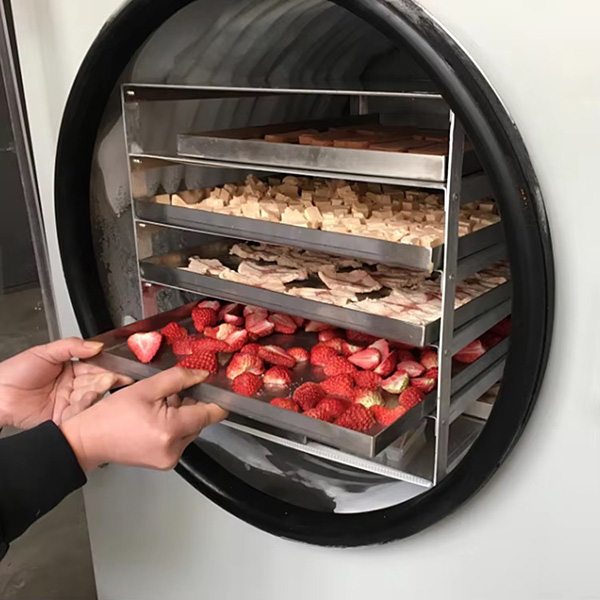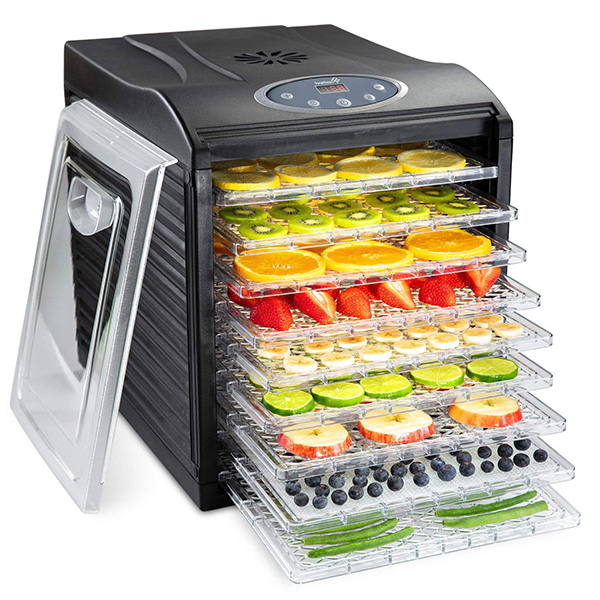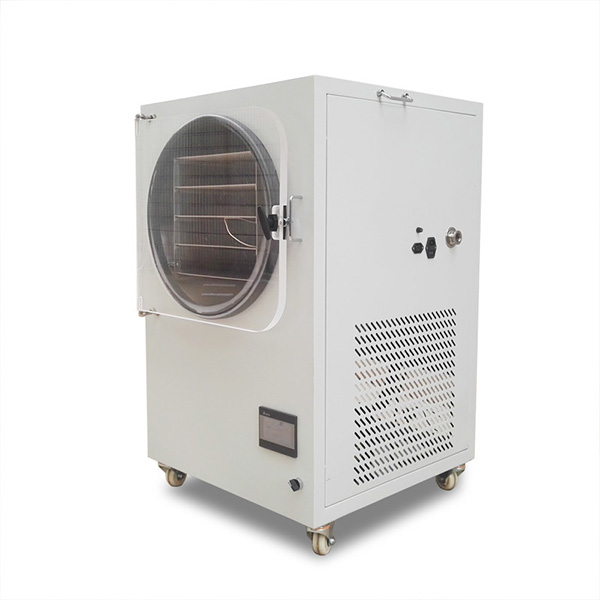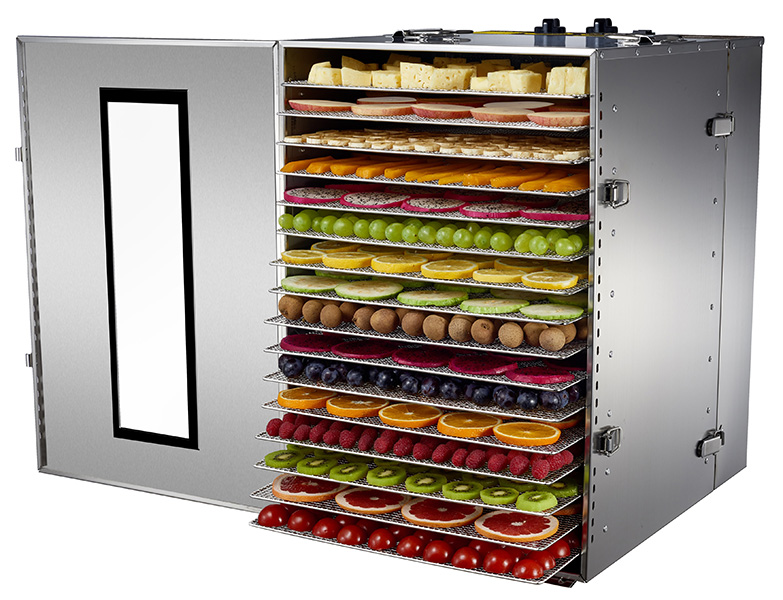
Content Menu
● Introduction to Home Freeze Drying
● Understanding the Freeze Drying Process
>> Advantages of Freeze Drying Food at Home
● Choosing the Best Home Freeze Dryer
>> Popular Home Freeze Dryer Brands
● DIY Freeze Drying: Is It Possible?
>> Alternative DIY Methods
● The Freeze Drying Process: Step-by-Step Guide
● Freeze Drying Fruits and Vegetables
● Creating Freeze-Dried Meals
● Freeze Drying vs. Dehydration: Understanding the Difference
● The Cost of Freeze Drying at Home
● Tips for Successful Home Freeze Drying
● Creative Uses for Freeze-Dried Foods
● The Future of Home Freeze Drying
● Conclusion
● Frequently Asked Questions
>> 1. How long does the freeze drying process take?
>> 2. Can all types of food be freeze-dried?
>> 3. How long do freeze-dried foods last?
>> 4. Is freeze drying food at home cost-effective?
>> 5. How do freeze-dried foods compare nutritionally to fresh foods?
Introduction to Home Freeze Drying
Freeze drying food at home has become increasingly popular among food enthusiasts, preppers, and health-conscious individuals. This innovative preservation method allows you to store food for extended periods while maintaining its nutritional value, flavor, and texture. In this comprehensive guide, we'll explore the world of home freeze dryers, the freeze drying process, and how you can incorporate this technology into your kitchen.
Understanding the Freeze Drying Process
Freeze drying, also known as lyophilization, is a sophisticated preservation technique that removes moisture from food through sublimation. This process involves three main steps:
1. Freezing: The food is rapidly frozen to temperatures below -30°F (-34°C).
2. Primary drying: The frozen water in the food is removed through sublimation, where ice turns directly into vapor without passing through the liquid state.
3. Secondary drying: Any remaining bound water is removed through desorption.
The result is food that retains its original shape, color, and nutritional content, with a significantly extended shelf life.
Advantages of Freeze Drying Food at Home
1. Long-term food preservation: Freeze-dried foods can last up to 25 years when properly stored.
2. Nutritional retention: The process preserves most of the food's original nutrients.
3. Flavor preservation: Freeze-dried foods maintain their original taste and aroma.
4. Lightweight and compact: Ideal for camping, emergency preparedness, or space-saving storage.
5. Versatility: You can freeze dry a wide variety of foods, including fruits, vegetables, meats, and even entire meals.
Choosing the Best Home Freeze Dryer
When selecting a home freeze dryer, consider the following factors:
1. Capacity: Determine how much food you plan to freeze dry regularly. 2. Size and weight: Ensure you have enough space to accommodate the machine.
3. Energy efficiency: Look for models with lower power consumption.
4. Ease of use: Choose a freeze dryer with user-friendly controls and clear instructions.
5. Warranty and customer support: Opt for brands that offer reliable after-sales service.
Popular Home Freeze Dryer Brands
1. Harvest Right: Known for their range of home freeze dryers in various sizes and finishes.
2. Labconco: Offers both small-scale and industrial freeze dryers.
3. Freeze Dry Machine: Specializes in compact, user-friendly models for home use.
DIY Freeze Drying: Is It Possible?
While commercial home freeze dryers offer the most efficient and reliable results, some enthusiasts have experimented with DIY freeze drying methods. These techniques, however, are less effective and may not produce the same quality results as a dedicated machine.
Alternative DIY Methods
1. Dry ice method: Place food in a cooler with dry ice and allow it to sublimate over several days.
2. Freezer method: Use a deep freezer to slowly remove moisture from food over weeks or months.
It's important to note that these methods are not as reliable or safe as using a proper freeze dryer, and may not effectively preserve food for long-term storage.

The Freeze Drying Process: Step-by-Step Guide
Follow these steps to freeze dry food at home using a dedicated machine:
1. Prepare the food: Clean, slice, or chop the food into uniform pieces.
2. Arrange on trays: Place the food in a single layer on the freeze dryer trays.
3. Pre-freeze (optional): For faster processing, pre-freeze the food in your regular freezer.
4. Load the machine: Place the trays in the freeze dryer and close the door securely.
5. Start the cycle: Set the appropriate cycle for your food type and start the machine.
6. Wait for completion: The process can take 20-40 hours, depending on the food and quantity.
7. Check for dryness: Ensure the food is completely dry before storage.
8. Package and store: Use airtight containers or mylar bags with oxygen absorbers for long-term storage.
Freeze Drying Fruits and Vegetables
Fruits and vegetables are excellent candidates for freeze drying due to their high water content. Here are some popular options:
1. Berries: Strawberries, blueberries, raspberries
2. Tropical fruits: Pineapple, mango, papaya
3. Stone fruits: Peaches, apricots, cherries
4. Vegetables: Peas, corn, bell peppers, onions
Freeze-dried fruits and vegetables make great snacks, additions to trail mix, or ingredients in baking and cooking.
Creating Freeze-Dried Meals
One of the most exciting aspects of home freeze drying is the ability to preserve entire meals. This is particularly useful for:
1. Camping and backpacking trips
2. Emergency food storage
3. Meal prep for busy professionals
4. Special diets or portion control
Popular freeze-dried meals include:
1. Pasta dishes
2. Soups and stews
3. Casseroles
4. Rice-based meals
To rehydrate, simply add hot water and wait for a few minutes.
Freeze Drying vs. Dehydration: Understanding the Difference
While both freeze drying and dehydration remove moisture from food, there are significant differences between the two methods:
1. Moisture removal: Freeze drying removes 98-99% of moisture, while dehydration removes 90-95%.
2. Texture: Freeze-dried foods maintain their original structure, while dehydrated foods often shrink and become chewy.
3. Nutritional value: Freeze drying preserves most nutrients, while dehydration can lead to some nutrient loss.
4. Shelf life: Freeze-dried foods can last up to 25 years, while dehydrated foods typically last 1-5 years.
5. Rehydration: Freeze-dried foods rehydrate quickly and fully, while dehydrated foods may not regain their original texture.
The Cost of Freeze Drying at Home
Investing in a home freeze dryer requires careful consideration of the costs involved:
1. Initial equipment cost: Home freeze dryers typically range from $2,000 to $4,000.
2. Energy consumption: Operating a freeze dryer can increase your electricity bill.
3. Maintenance: Regular oil changes and occasional part replacements are necessary.
4. Packaging materials: Mylar bags, oxygen absorbers, and storage containers add to the overall cost.
While the upfront cost may seem high, many users find that the long-term savings on food preservation and the ability to create their own freeze-dried products outweigh the initial investment.

Tips for Successful Home Freeze Drying
1. Choose high-quality, fresh ingredients for best results.
2. Cut foods into uniform sizes for even drying.
3. Avoid overloading the freeze dryer trays.
4. Experiment with different foods and recipes to find your favorites.
5. Label and date your freeze-dried foods for easy organization.
6. Store freeze-dried foods in a cool, dry place away from direct sunlight.
7. Regularly maintain your freeze dryer according to the manufacturer's instructions.
Creative Uses for Freeze-Dried Foods
1. Instant smoothie mixes
2. Homemade astronaut ice cream
3. Lightweight backpacking meals
4. Emergency food kits
5. Unique gift baskets
6. Preserved pet treats
7. Custom spice blends
8. Long-lasting floral arrangements
The Future of Home Freeze Drying
As technology advances and more people become interested in food preservation, we can expect to see continued innovations in home freeze drying:
1. More energy-efficient models
2. Smaller, more compact designs
3. Integration with smart home technology
4. Improved user interfaces and automation
5. Wider availability and potentially lower costs
Conclusion
Freeze drying food at home offers a unique opportunity to preserve a wide variety of foods while maintaining their nutritional value, flavor, and texture. Whether you're an outdoor enthusiast, a prepper, or simply someone who wants to reduce food waste and enjoy high-quality preserved foods, a home freeze dryer can be a valuable addition to your kitchen. By understanding the process, choosing the right equipment, and experimenting with different foods, you can master the art of freeze drying and enjoy its many benefits.

Frequently Asked Questions
1. How long does the freeze drying process take?
The freeze drying process typically takes between 20 to 40 hours, depending on the type and quantity of food being processed. Factors such as water content, thickness of the food, and the specific model of freeze dryer can affect the duration.
2. Can all types of food be freeze-dried?
Most foods can be freeze-dried, including fruits, vegetables, meats, dairy products, and even complete meals. However, foods with high fat content, such as avocados or fatty meats, may not freeze dry as well and may have a shorter shelf life.
3. How long do freeze-dried foods last?
When properly packaged and stored, freeze-dried foods can last up to 25 years. It's essential to use appropriate packaging materials, such as mylar bags with oxygen absorbers, and store the food in a cool, dry place away from direct sunlight.
4. Is freeze drying food at home cost-effective?
While the initial investment in a home freeze dryer can be significant, many users find it cost-effective in the long run. Factors to consider include the amount of food you plan to preserve, the cost of commercially freeze-dried products, and the potential reduction in food waste.
5. How do freeze-dried foods compare nutritionally to fresh foods?
Freeze-dried foods retain most of their original nutritional value. The process preserves vitamins, minerals, and enzymes better than other preservation methods. However, some water-soluble vitamins, such as vitamin C, may be slightly reduced during the process.












